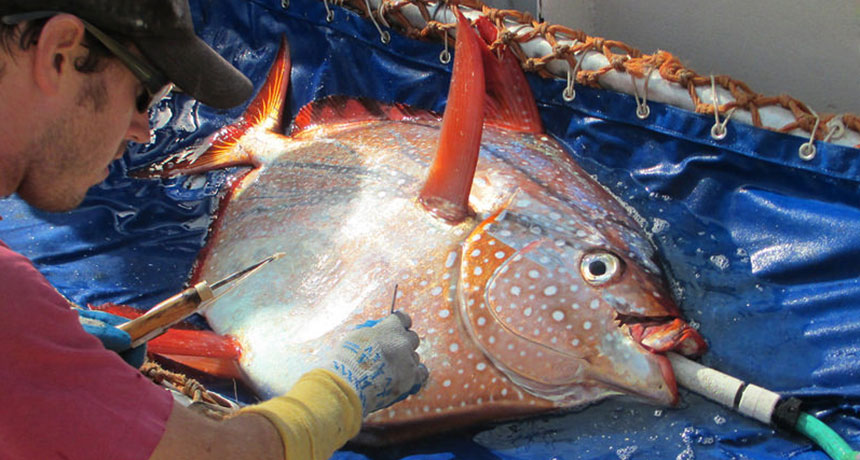Deepwater dweller is first known warm-hearted fish
Unlikely opah can keep much of its body warmer than its cold sea surroundings

BIG FISH A fish called an opah, studied here by researchers, is now proposed to be as about as close to a full-body warm-blooded fish as science has yet discovered.
NOAA Fisheries West Coast/Flickr (CC BY-NC-ND 2.0)